Audio recorders let us listen in to life at Nap Nap, and how it responds to these environmental flows.
This spectrogram shows five minutes of audio from 6am on the 30th of August, 2020
This is Nap Nap swamp, on Nari Nari country in south-western New South Wales. Nap nap means “very swampy” in traditional language.
Nap Nap is part of the Lowbidgee floodplain, a network of wetlands that covers two thousand square kilometers near the confluence of the Kalari (Lachlan) and Murrumbidgee rivers.
It's one of many Murrumbidgee wetlands that receive environmental flows — water allocated by the Commonwealth to sustain these ecologically important places.

Audio recorders let us listen in to life at Nap Nap, and how it responds to these environmental flows.
This spectrogram shows five minutes of audio from 6am on the 30th of August, 2020
These shapes and colours show the sounds of different animals.
Those repeated orange bars are the song of a superb fairywren — the pink blob around 6:03 is a pair of raucous kookaburras
This graphic shows a whole day's worth of five-minute segments, from midnight to midnight. You can see the call of the kookaburras at 6am.
Click or tap anywhere on the image to listen; you'll find magpies galahs and more.
This is the 31st of August. After midnight those blue bands are the sounds of rain, and the wind blowing through the lignum.
At 4am a single Murray valley froglet has been woken by the rain. This tiny frog is very tolerant of the cold — those red stripes are his faint and hopeful call.

This small ground-dwelling frog is up to 2.5cm long, and found throughout much of south-eastern Australia. It lays its eggs one at a time in shallow, muddy water.
Image: Damian Michael
By 6am the wetland is waking up: the fairywrens are singing again, with a boobook owl in the background. Around 8am the grey strike-thrush joins in.
After a cold, windy day you can see the bright shapes of the dusk chorus around 6pm, but by 7pm only the boobook owl calls.
Nap Nap is pretty dry, but keep an eye on the water level below.
An environmental flow of some 200,000 megalitres — more than a third of the volume of Sydney Harbour — is on its way downriver to the Lowbidgee, with around 16,000 megalitres coming to Nap Nap.
It's the 1st of September. The midnight boobook is calling again and the fairywrens and kookaburras greet the day.
A rufous whistler chimes in after 7am - notice those repeated pink blocks which return through the day

One of Australia's finest songsters, the Rufous Whistler is a small insect-eating bird found in woodland habitats throughout mainland Australia.
Image: Mark Gillow
But look at that red stripe from 7pm onwards: more Murray valley froglets calling into the night as the water starts rising.
It's the 2nd of September. Notice the water level has risen — the environmental water has started to reach the wetland.
The Murray valley froglets are now out in force. After being interrupted about 1am by a noisy pacific black duck they keep calling as the water rolls in.
The froglets sing on, through the windy day and the 6pm dusk chorus — they get louder and louder through the night.
Around 7pm the 'dok' of an inland banjo frog joins in; it's those small repeated dots along the bottom of the frame.
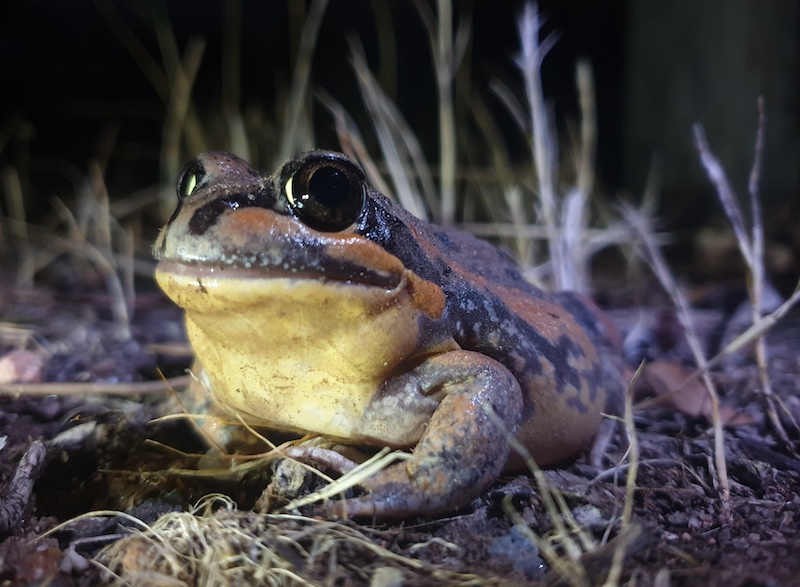
Up to 9cm long, this frog is found in the inland rivers and wetlands of western NSW and nothern Victoria. It spends most of its life concealed underground, emerging only after rains to feed and spawn.
Image: Gayleen Bourke
Next, a spotted marsh frog starts calling. Its three staccato notes show up as lines of yellow dots. Listen after 11pm to hear the full trio in action.
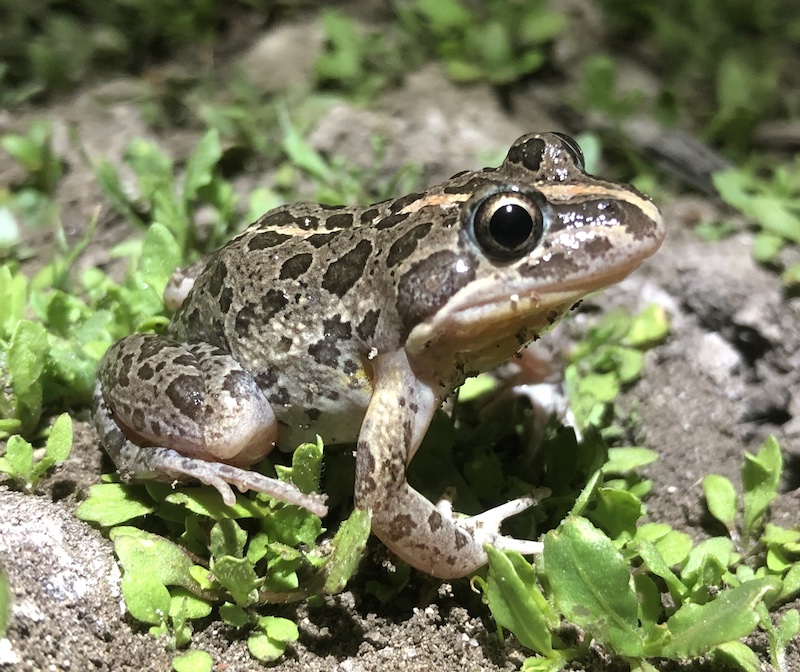
Up to 5cm long, this frog is found throughout eastern Australia. It is one of the first species to move in to flooded ponds, dams and ditches. Only Spotted Marsh Frogs in NSW and Queensland have this staccato 'machine gun' call.
Image: Damian Michael
The water's still rising on the 3rd of September, and Nap Nap is starting to get loud!
The frogs chorus through the night: the triple dots of the marsh frog calls are clear after 3am. After dawn the frogs are so loud they almost drown out the kookaburras
More ducks are moving in as the water rises; you can hear them splashing around after 8am
After dark, one more frog joins the chorus. See those bright pink stripes low in the spectrogram? It's the deep, booming call of a southern bell frog
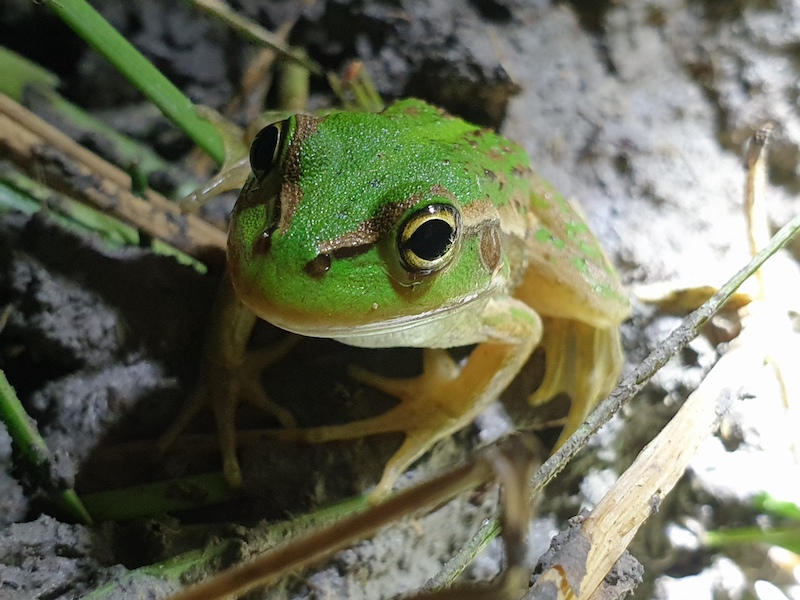
This large, ground-dwelling frog is up to 10cm long. Once common in New South Wales and Victoria, it now exists only in isolated populations in woodland swamps, and is endangered in NSW.
Image: Gayleen Bourke - Southern Bell Frog at Nap Nap, January 2020
A few days later on the 7th of September, the water's still rising and the frogs are still singing. The froglets, marsh frogs and banjo frogs form a wall of sound around 3am
The endangered southern bell frogs are back too, just before 6.05pm.
But notice those yellow stripes after 7pm? It's the warbling call of a new species: Peron's tree frog

Also known as the 'maniacal cackle frog' due to its call, this frog is found throughout south-eastern Australia in woodland, shrubland and urban areas. Up to 7cm in size, these frogs are agile climbers, and have the ability to change colours.
Image: Damian Michael
As the water rolls in to Nap Nap Swamp, the wetland comes to life — you can hear it

Eastern Great Egret, December 2020

Vegetation, November 2014

Nap Nap Swamp in flood, January 2020

Great Cormorant chick, December 2020
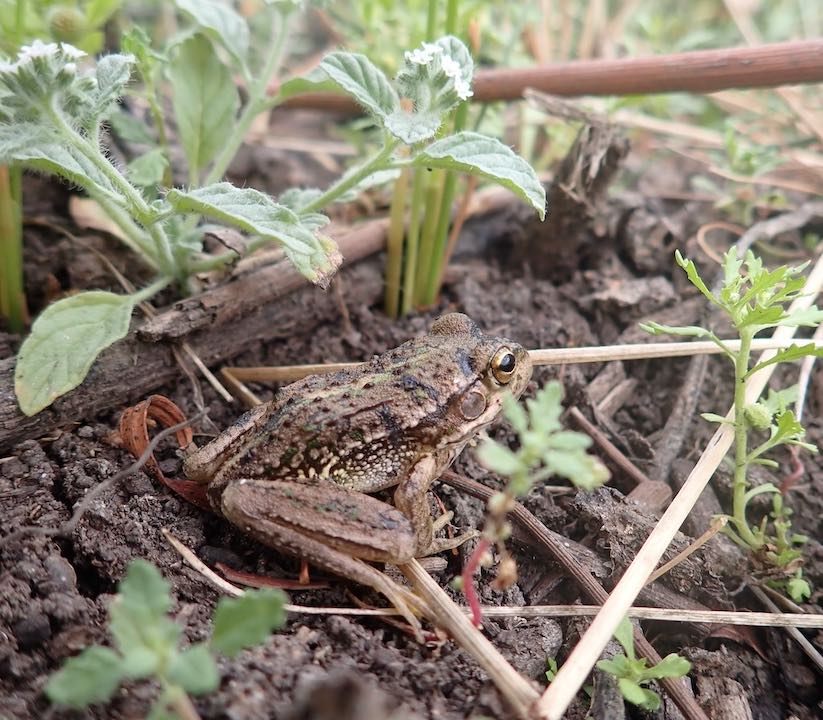
Southern Bell Frog, March 2020
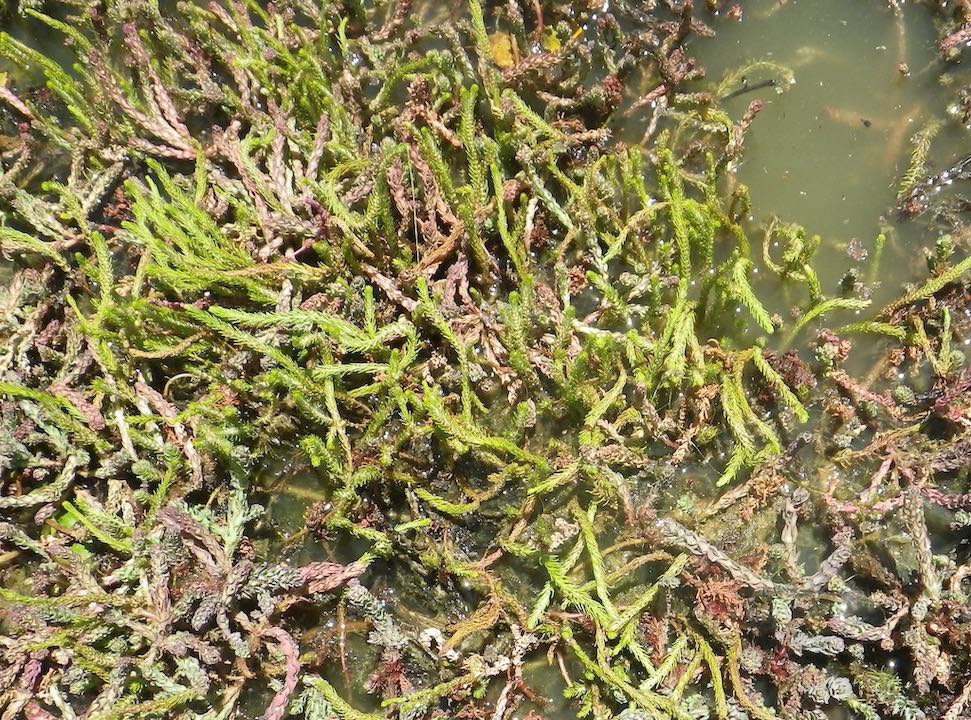
Milfoil, January 2019
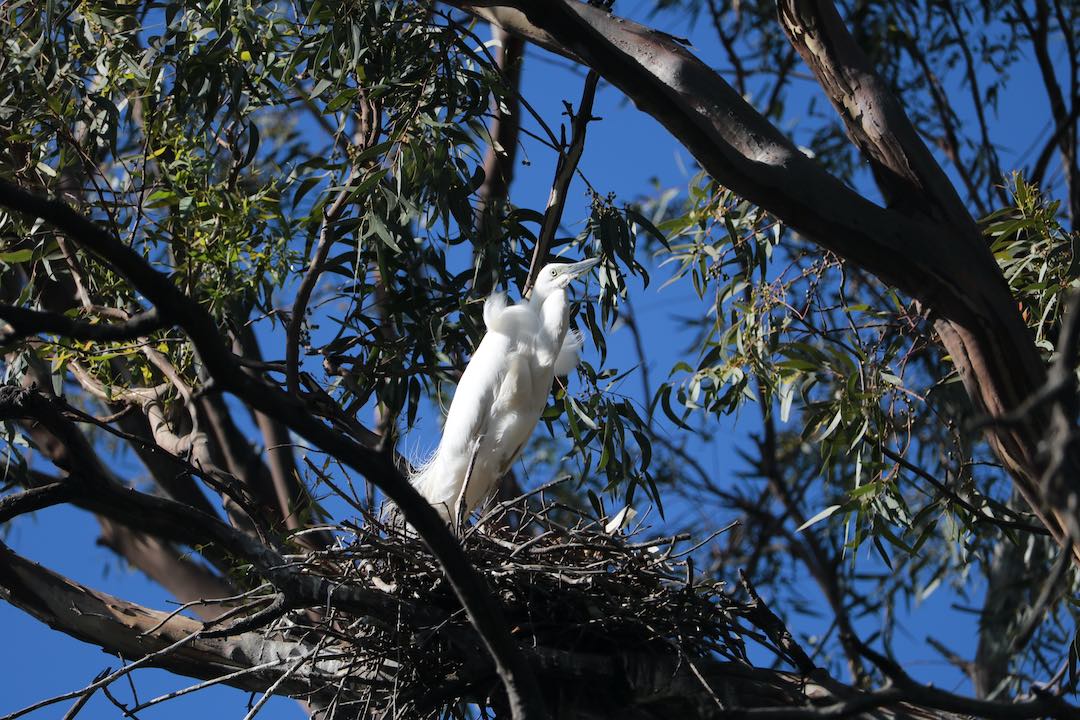
Eastern Great Egret nesting, December 2020
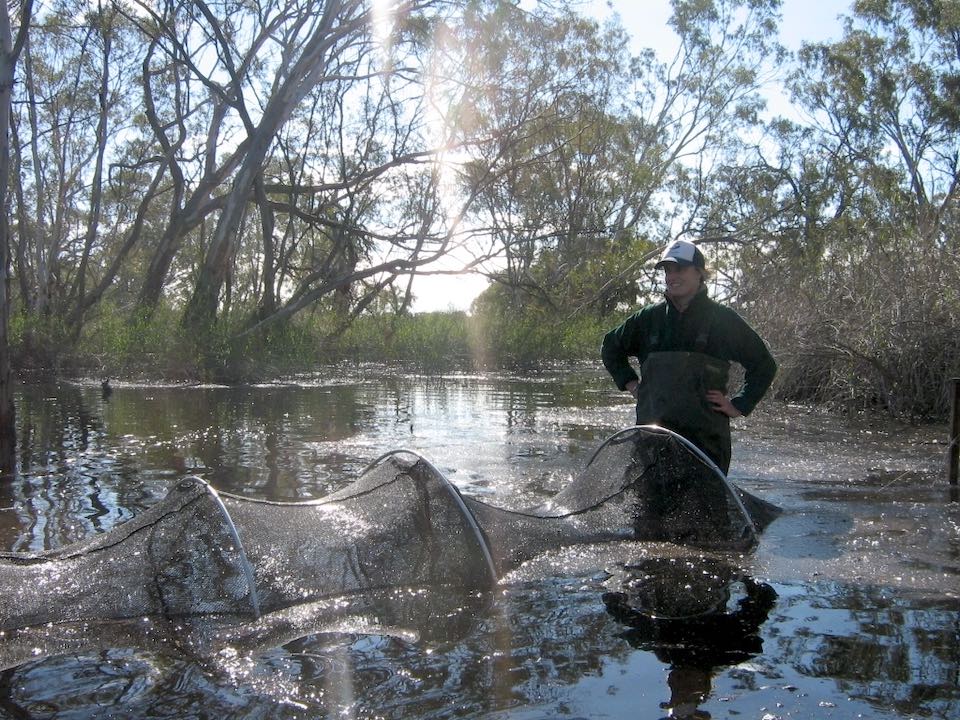
Flow-MER netting, July 2009
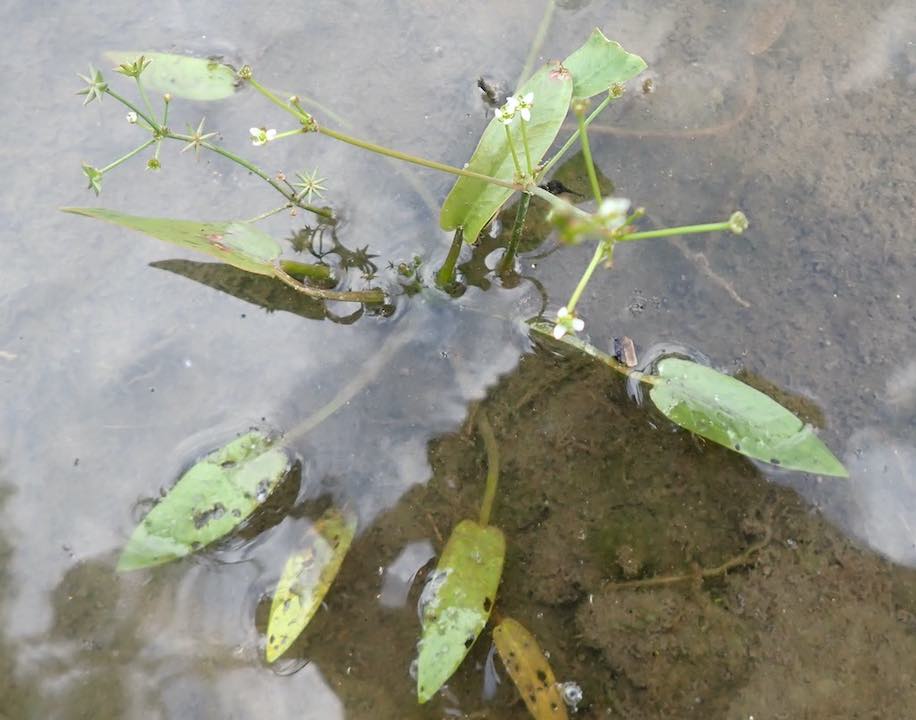
Starfruit, March 2020
Flow-MER's long-term monitoring has shown that periodic inundation is key for these ecosystems. It cycles nutrients, drives breeding for animals like birds and frogs, and regenerates trees.
Environmental flows help sustain this place, and many others on the Murrumbidgee.
Keep scrolling to explore all nine days on Nap Nap as the water rises; there's much more to discover, and you can share your favourite clips.
You might also like to find out more about Flow-MER, get into citizen science with FrogID or iNaturalist Australia, or investigate ecoacoustics, the science of using sound to understand the living world
The Sound of Water was created by Mitchell Whitelaw of the ANU School of Art and Design, in collaboration with Skye Wassens, who leads the Murrumbidgee Monitoring Evaluation and Research Program at the School of Animal, Environmental and Veterinary Science, Charles Sturt University.
This work was funded by the Commonwealth Environmental Water Office through the Flow-MER program.
Thanks to:
Built with AngularJS, Scrollama, Howler.js and Flickity. False-colour spectrograms created with Sarab Sethi's python implementation.
This is v1.0, published 21 December 2021